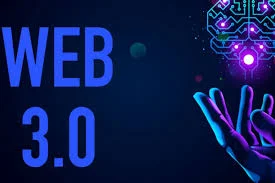The web has progressively assimilated into our daily lives since the early 1990s when it was still in its infancy. At the same time, the internet’s underlying technology, networks, and protocols have been rapidly changing. The user experience on the internet has since seen some substantial modifications as well. As the globe begins to transition to Web 3, interest in the top 3.0 benefits is skyrocketing.
Web 3.0: What is it? How is it superior to earlier iterations of the internet? Do we currently use any Web3 programs or services? It stands to reason that while attempting to understand what Web3 is all about, you would have many similar questions. The talk that follows will provide a general overview of the development of Web 3D and some of its salient benefits.
The Path to Web 3.0
A thorough understanding of how Web 3.0 originally came to be would be the best web3. These technologies Web 3.0 is intended to address the shortcomings of web2, which has strong decentralized protocols and servers. Web 2.0 is also plagued by numerous serious problems with data portability, internet privacy, and self-sovereign identity.
If you are looking for customized software development Services visit this link.
What is Web 3.0?
The one question, which is an integral highlight in any discussion on Web3, now has a significant implication. Web 3.0 is new, and anyone can decipher the meaning of this new concept according to their understanding. For starters, you need to know that the web3 advantages focus on resolving some of the most dominant and critical issues in the existing web landscape. The development of web3 does not have any centralized authority as the supervisor. On the contrary, the progress in web3 development depends on a collection of private businesses, individuals, and non-profit organizations.
Since web3 is still in its early stages, it is challenging to provide a clear description. But you might consider it to be the third iteration of the internet, with decentralization, openness, and user autonomy. The fundamental description of web3 provides a solid basis for comprehending its benefits.
ADVANTAGES OF WEB 3.0
The fundamental overview of the road to Web 3 and its definition demonstrate how it is currently a crucial requirement. Additionally, a preview of web3’s potential to alter the internet and user interfaces was provided via its features. You can recognize the considerable benefits that Web3 offers based on the conclusions about its fundamentals. Here are a few notable benefits of Web3 that everyone should be aware of.
1. Ownership of Data Control
Take a moment to consider all the websites and internet tools you regularly use. To gain access to various services, you provide your personal information on numerous platforms. You produce content, like images or videos, and post it online to platforms like Facebook and Instagram. You must have believed that your private information on an Amazon account or the pictures on your Facebook profile were safe and under your control in the midst of all this.
That is untrue, though, as centralized organizations like Facebook, Google, and Amazon use various strategies to commercialize user data. End users would have total control over the data they possess thanks to the advantages of Web 3.0 by design. Users had the option to share information based on their choices. Web3 may therefore profit from removing the tech giants’ stranglehold over user data.
2. Widespread Access to Data
A significant web 3.0 advantage is also greatly aided by the interconnectedness feature of web 3. The main component of Web3 would be the development of a networked environ Web 3.0ment that enables information interoperability and easy access. On the other Freedom may can Freedom may use Web3.
Access to digital services would not be restricted by factors such as location, socWeb3 is grateful to you. external orientation, or income. Users can transfer digital assets, wealth, and information more quickly and efficiently around the globe with the support of Web 3’s fundamental design. Web3 can give internet users the flexibility to profit from transactions without any centralized control.
4. Benefits to Creators
All content producers now have a good opportunity thanks to the introduction of Web 3. Due to the many intermediaries in the many methods for reaching their audience, the majority of content creators struggle to receive the actual value for the labor our. Creators may gain significantly from the maiWebeb 3.0 elements of tokenization and the creative economy.
Web3 would, first and foremost, guarantee decentralized control over the security of digital assets like tokens and data. On the other side, creators would fully control who owns their creations. The creator economy may also assist creators in discovering fresh resources and markets for growing their audience.
5. Enhanced Safety
The assurance of improved security is the last and most significant benefit listed under Webentralisationdecentralization and cryptography to protect user data. Blockchain is resistant to conventional security flaws due to its consensus methods and fundamental design. While there are still 51 percent of attacks that may be used to compromise web apps and systems, the development of new security measures and best practices can address the issues.


